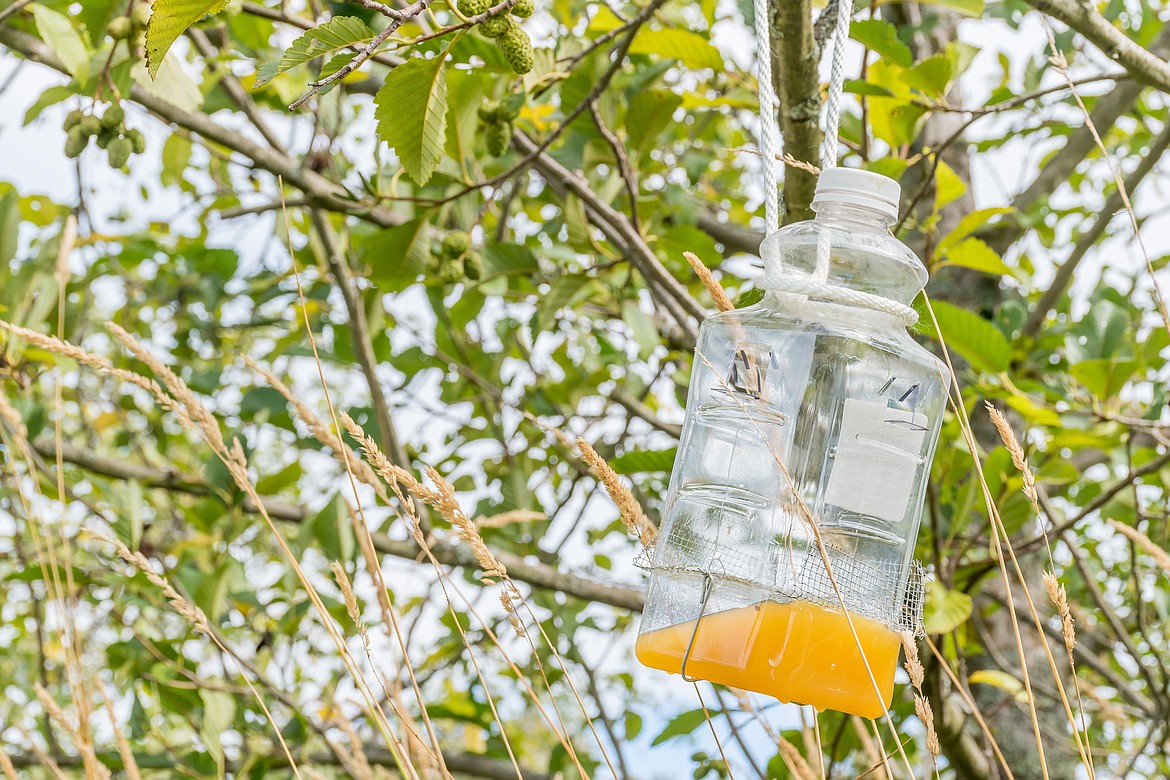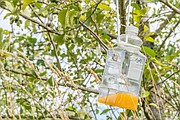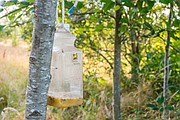More Asian giant hornets found in Washington
WHATCOM COUNTY — The bad news is that nine Asian giant hornets have been found in Washington state in the last year.
The good news is the nasty bugs — most two inches long with stingers nearly a quarter-inch in length — have only been found in Whatcom County, and they don’t seem to be spreading far. At least not yet.
“We think there’s one nest in the Birch Bay Area, and we’re hoping to locate it and eradicate it by the end of October, before they start mating and dispersing,” said Karla Salp, a spokesperson for the Washington State Department of Agriculture (WSDA).
The first Asian giant hornet was found in fall 2019 in British Columbia, with the first worker hornet found in Washington state last December. The Asian giant hornet is also referred to as “the murder hornet” because swarms attack honeybee hives, decapitating the bees with their powerful mandibles and then using the cleared-out hive to raise its own young.
A drone, which exists solely to inseminate queen hornets, was captured in a trap in late July and positively identified at a U.S. Department of Agriculture lab in mid-August, according to the WSDA.
Nearly 2,000 traps have been set across the state to help find Asian giant hornets. The WSDA is asking farmers, beekeepers and others to report hive attacks rather than trying to kill the hornets, in order to attempt to track them to the source.
Salp said the department is also looking to catch live specimens it can attach a tracker to in an attempt to find the hive and eradicate the hornets at the source.
In addition, the department is placing sentinel hives — essentially, beehives that act as bait for the hornets — in an attempt to capture hornets in the act.
Salp said the live traps contain orange juice and rice wine to attract the hornets but are designed in such a way so that the hornets don’t drown in the traps.
“We’ve not caught any in a live trap yet,” she said. “Following them back to the nest is hard because they nest in the ground.”
According to Salp, Washington State University researchers created a computer model of the parts of Washington state that would make the most suitable habitat for the giant hornet — based on their habitats in Asia — and determined that the portion of the state west of the Cascades south along the coast all the way into California, as well as the very northeast corner of the state, would be optimal for the invasive pest.
“Central Washington is not looking like a hot area to live in, not based on the modeling,” Salp said.
Salp said U.S. and Canadian officials are working hard to find and exterminate all of the Asian giant hornets before they can spread too far.
“We want them eradicated out of the Pacific Northwest,” she said.
Charles H. Featherstone can be reached at cfeatherstone@columbiabasinherald.com






